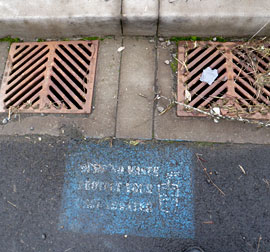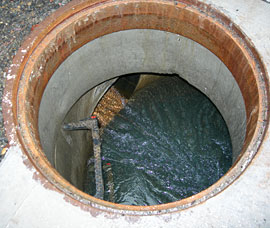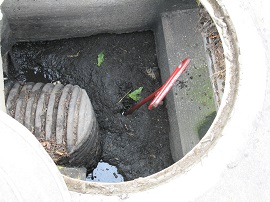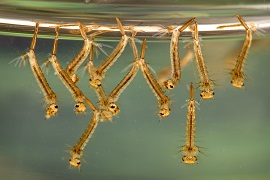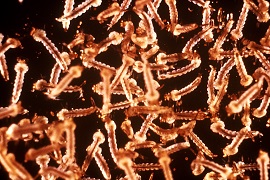Catch basin and manhole
Catch basin - storm drain
Good - This manhole shows a well
maintained interior.
Catch basins and manholes are underground concrete structures typically fitted with a slotted grate, but may have a solid lid. It collects stormwater runoff and routes it through underground pipes, allowing sediment and debris to settle. It also can be used as a junction in a pipe system to allow access.
Catch basin - also known as a storm drain or curb inlet, it can be a round structure (older) or a rectangular box (newer). It is used when connected pipes are less than 18 inches in diameter. The depth from the grate to the bottom of the pipe is usually less than 5 feet.
Manhole - is a round, concrete structure typically ranging in diameter from 4 feet to 8 feet. It is an access point for underground pipe maintenance. Manholes generally have steps mounted on the side for easy access.
Catch basins and manholes are built into almost all stormwater systems.
Confined space warning for underground facilities
Due to potential dangers, only trained and certified persons should enter confined spaces. Confined spaces are defined as:
- Large enough that an individual could fully enter the space and work.
- Having limited or restricted entry or exit.
- Not primarily designed for human occupancy.
For more information visit Washington State Department of Labor & Industries.
Maintenance sheet
Catch basin
Catch basin insert
Maintenance is needed if you see these signs
Problem: This catch basin has a lot of
sediment.
The facility drains slowly after a rain storm
Leaves, trash and other debris slow or block inlet or outlet
More than half of the sump is filled with sediment or there is less than 7" of clearance from the top of the sediment to the bottom of the pipe
There is evidence of oil, gasoline or other pollutants
Top slabs have holes larger than 2 square inches or cracks wider than 1/4 inch, or the inlet/manhole frame is not sitting flush with the top slab
Tips for fixing problems and general maintenance
Remove any vegetation covering the lid.
Inspection or maintenance that requires entering the underground facility can only be done by individuals trained and certified to work in hazardous confined spaces.
- Remove trash and debris regularly.
- Identify sources of leaks or spills and contain them as quickly as possible.
- Remove sediment.
Check inlets and any open or confined standing water for mosquito larvae (see photos below). If mosquitoes are a concern, contact Clark County Mosquito Control District for information. The 24-hour service request line is 360.574.7906.
Report Spills
Chemical spills such as oil, gasoline, paint or herbicides/pesticides may cause harm to surface or groundwater. Spills MUST be reported to the Washington State Department of Ecology and your local city or county. DO NOT attempt to rinse away the spill until it's been checked.
Washington Department of Ecology 24-hour Spill Response Number: (360) 407-6300
